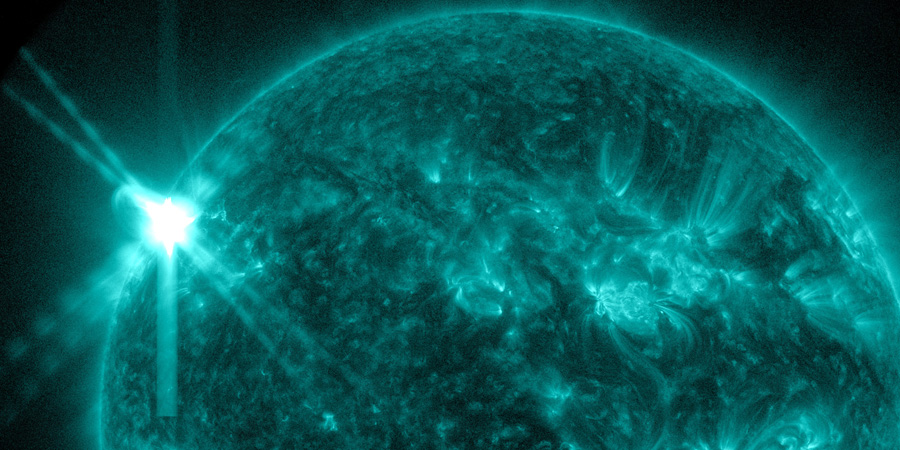X2.2 solar flare with earth-directed CME
Saturday, 18 February 2023 12:55 UTC

A major long duration X2.28 solar flare (R3-strong) took place yesterday and reached its peak at 20:17 UTC. This is the strongest solar flare of Solar Cycle 25 thus far and we can thank sunspot region 3229 for that. This sunspot region is currently close to the north-east limb and the solar flare was highly eruptive. Despite the region's location near the limb, we can not rule out a glancing blow from this plasma cloud.
Impressive coronal dimming and a Type II radio emission with an estimated velocity of 2407 km/s quickly revealed that we should expect a large coronal mass ejection following the eruption. That is indeed what we got. While we at first did not expect it to have an earth-directed component due to the location of the eruption, we do have to say that there is a chance that we will see an impact at Earth. SOHO/LASCO coronagraph imagery reveals a bright and wide full halo asymmetrical coronal mass ejection. While there hasn't been an official forecast out yet we do think a glancing blow is likely based on the available imagery late tomorrow (19 February) or early on 20 February. All times in UTC likes always! Minor G1 geomagnetic storm conditions will be possible.
Yesterday's X2.2 solar flare is the strongest solar flare of SC25 thus far. The eruption is impressive and despite it taking place near the NE limb, an asymmetrical halo CME became visible which indicates there is a good chance that part of the cloud will impact Earth. pic.twitter.com/QsVkzEVJgw
— SpaceWeatherLive (@_SpaceWeather_) February 18, 2023
A second coronal mass ejection that became visible during the night (not visible on the above video) came from the far side and is not directed towards a planet.
Sunspot region 3229 does not look very impressive based on what we can see right now but considering we just had this major X-class solar flare from it, we should monitor it for more flare activity. None of the other sunspot regions on the disk right now are expected to produce M or X-class solar flares.
Thank you for reading this article! Did you have any trouble with the technical terms used in this article? Our help section is the place to be where you can find in-depth articles, a FAQ and a list with common abbreviations. Still puzzled? Just post on our forum where we will help you the best we can!
Latest news
Latest forum messages
Support SpaceWeatherLive.com!
A lot of people come to SpaceWeatherLive to follow the Sun's activity or if there is aurora to be seen, but with more traffic comes higher server costs. Consider a donation if you enjoy SpaceWeatherLive so we can keep the website online!

Space weather facts
| Last X-flare | 2024/03/28 | X1.1 |
| Last M-flare | 2024/04/23 | M3.0 |
| Last geomagnetic storm | 2024/04/19 | Kp7 (G3) |
| Spotless days | |
|---|---|
| Last spotless day | 2022/06/08 |
| Monthly mean Sunspot Number | |
|---|---|
| March 2024 | 104.9 -19.8 |
| Last 30 days | 125.4 +21.1 |


